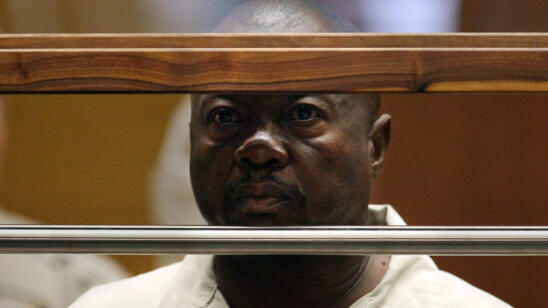On October 12, 1986, two young lovers in their 20s, Cathleen Thomas and Rebecca Ann Dowski, were strangled, had their throats cut and were left just off Colonial Parkway, a scenic roadway that links the Historic Triangle of Virginia: Jamestown, Williamsburg and Yorktown.
The gruesome murders were just the start of a spate of killings near some of Virginia’s most well-known historic tourist areas. Each year for the next three years, another couple was killed or presumed killed (their bodies were never found). All of the cases remain unsolved.
New York Times bestselling authors Blaine Pardoe and his daughter and co-author Victoria Hester explored the hidden story behind the victims, their survivors and the ongoing investigation in their new book: A Special Kind of Evil: The Colonial Parkway Serial Killings.
They spoke to A&E True Crime about why the murders have gone unsolved for so long and the evidence they believe points to a serial killer.
What about the case interested you?
Pardoe: It is a case that hasn’t had a lot of exposure. It is the oldest unsolved serial-killing spree in Virginia, but I had never heard of it. Once I started looking into it, I realized it was a great opportunity to tell the stories of the victims and the families.
Why haven’t more people heard of these murders?
Hester: I honestly believe it’s because these killings happened in a tourist area: Williamsburg, Jamestown, Yorktown, those areas all thrive on tourism. Everyone has to take the Colonial Parkway to get there. Officials didn’t want to discourage people from coming to the historic areas.
Pardoe: This case also gives law enforcement something of a black eye. They are not on same page. For example, Virginia State Police believe the cases are separate despite their behavioral experts believing they are all connected. Even if the cases are completely disconnected that means multiple people killed eight people. That’s worse [than a serial killer].
What keeps some police from accepting the serial-killer theory?
Pardoe: They are focused on people of interest. Those people are likely not serial killers. It’s classic tunnel vision in some cases. They may be right, but then families want them to make an arrest. One thing we have heard from almost all the families is even if there is an arrest in one case that shows the killings are not connected, that’s a victory for everyone.
What were the patterns that that led you and others to believe a serial killer did this?
Pardoe: They were all couples. Most of the victims are separated from the cars. The vehicles of the last three victims were all staged for robbery. They were positioned with the drivers’ side windows down, lights on in interiors, keys left in plain sight, wipers on, radios on. This killer spent time with the victims, got them to get out of their cars, took their shoes and exerted control. The killer got a thrill out of controlling the victims. He believes ‘When I kill one, I can watch the reaction of the other.’ That’s a thrill.
A lot of people (strongly believe) someone in law enforcement or connected to law enforcement were involved. The glove boxes were open, the drivers’ side windows were down. These are things you do if an officer or someone in authority approaches your vehicle. You reach in the glove box for your registration.
Hester: In a couple cases, there were things left behind. At one [crime scene], they found a roach clip on the window of the car. That was a taunt to the police, almost saying ‘Look at this. I had all this time.’
What was the biggest surprise you found while investigating these crimes?
Hester: The biggest surprise was walking onto the area of the last crime scene, the logging road. You can’t put into words how creepy it is. It has a gloomy, murderous feeling. You are trapped. There is only one way in and one way out. And the logging trail—it has such thick, dense forest there’s nowhere to run, especially in the middle of the night. You’d run into a tree. I tried screaming to see if anybody could hear me. It’s too dense. You look up at the sky and hardly see any blue. It’s terrible to say, but it’s the perfect place for murder. One person could have easily done it, especially when the victims were petrified for their lives.
Pardoe: There were a few things. One is that the FBI contacted the Russians to say ‘We know you have satellites viewing that area. Can you give us the pictures on these dates because you might have inadvertently caught something?’ The Russians said ‘nyet’ (no). I think that speaks volumes to how far the FBI has gone to solve this.
Do you believe these crimes will be solved?
Hester: Yes. There was a murder in Virginia that was committed more than 30 years ago that was just solved. It happens all the time.
Pardoe: There was a wealth of evidence at the four crime scenes. As new investigators look at it with fresh eyes, new theories will emerge. I think it is solvable. Someone knows something. Someone has a key.
Related Features:
Why Did Nashville Become a Serial-Killer Haven in the 1970s?
Is There a Serial Killer in Chicago Right Now, Strangling Women and Burning Their Bodies?
‘Good Luck Sleeping Tonight’: Serial Killers Plague Almost All Cities


